
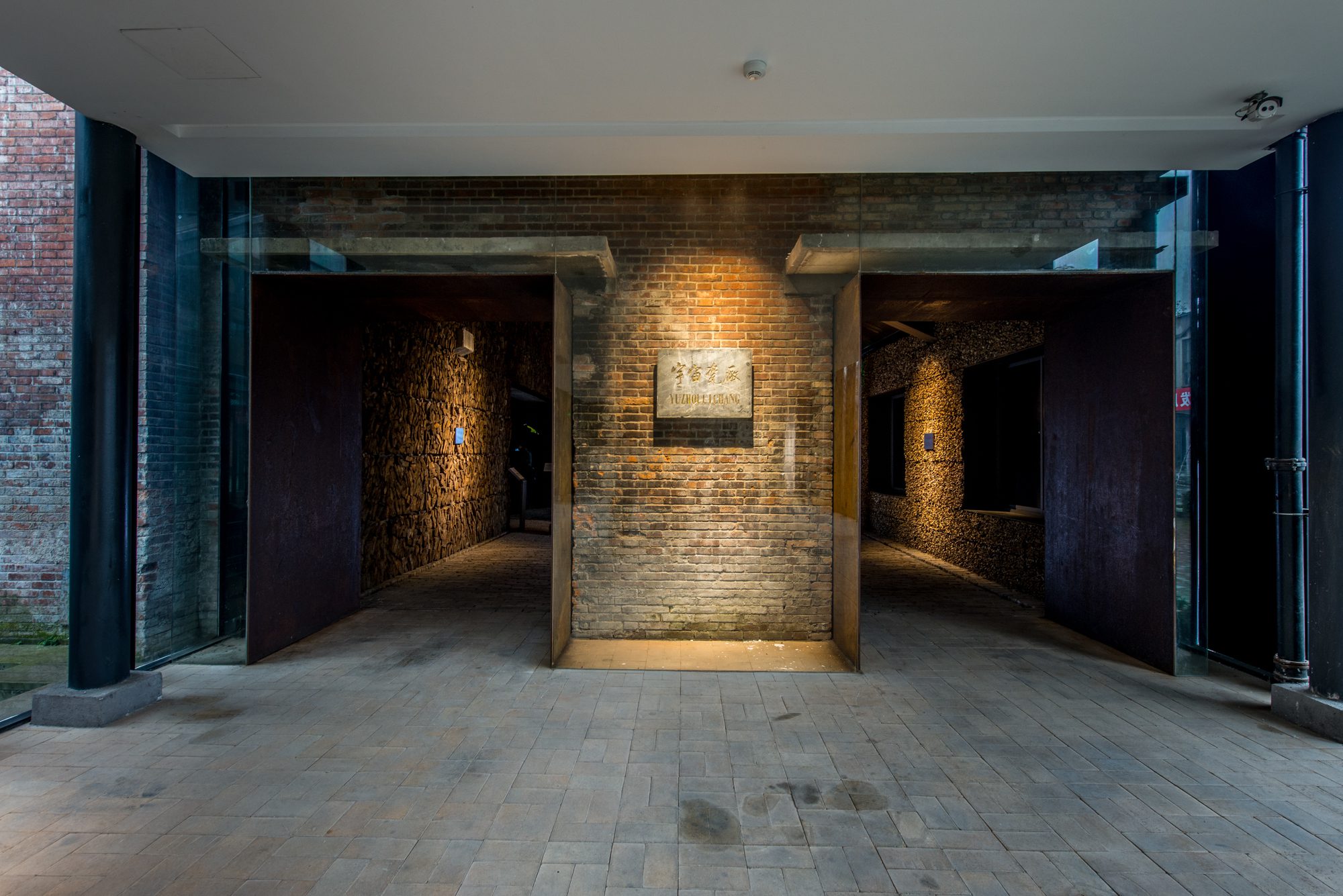
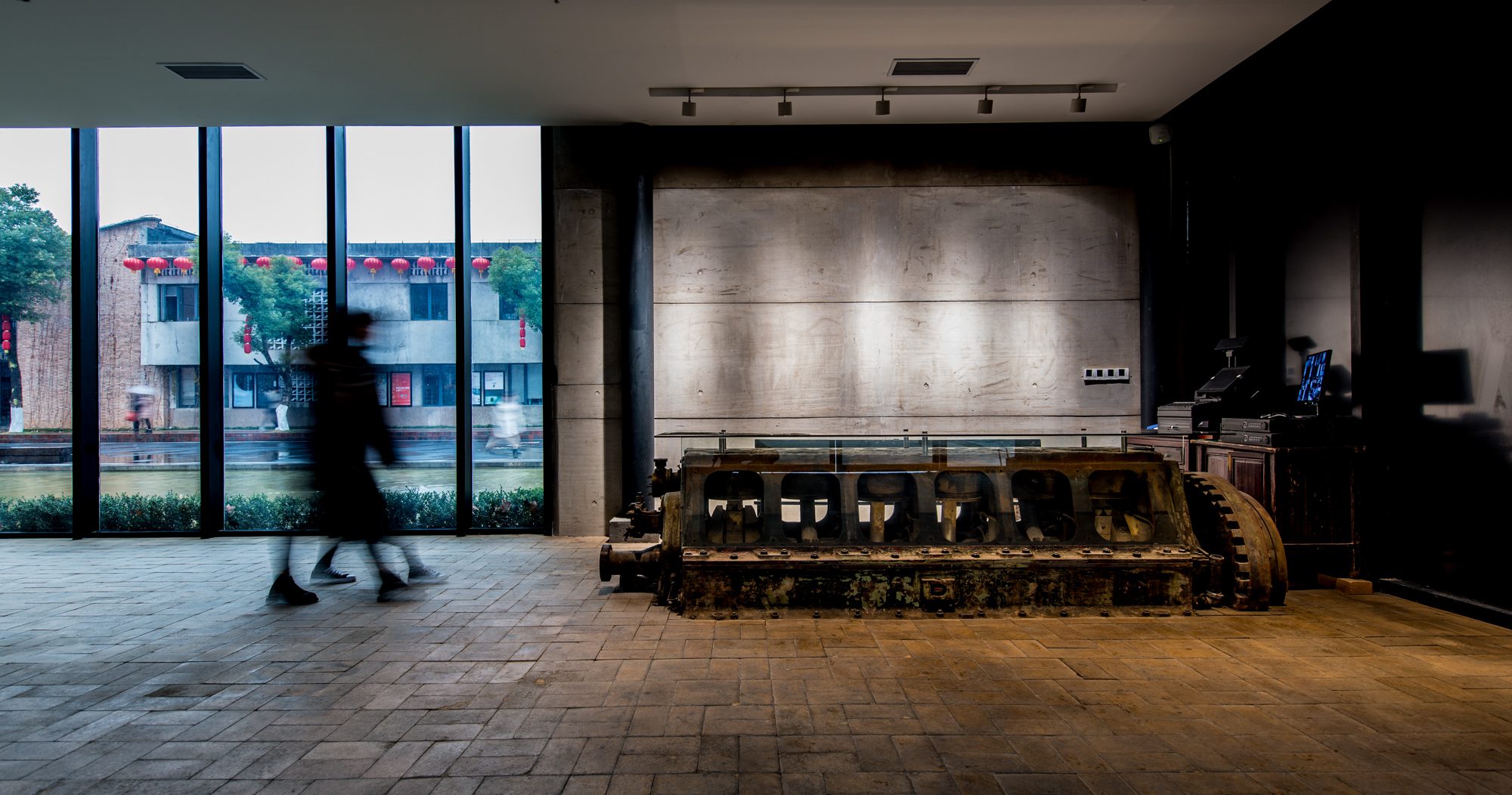
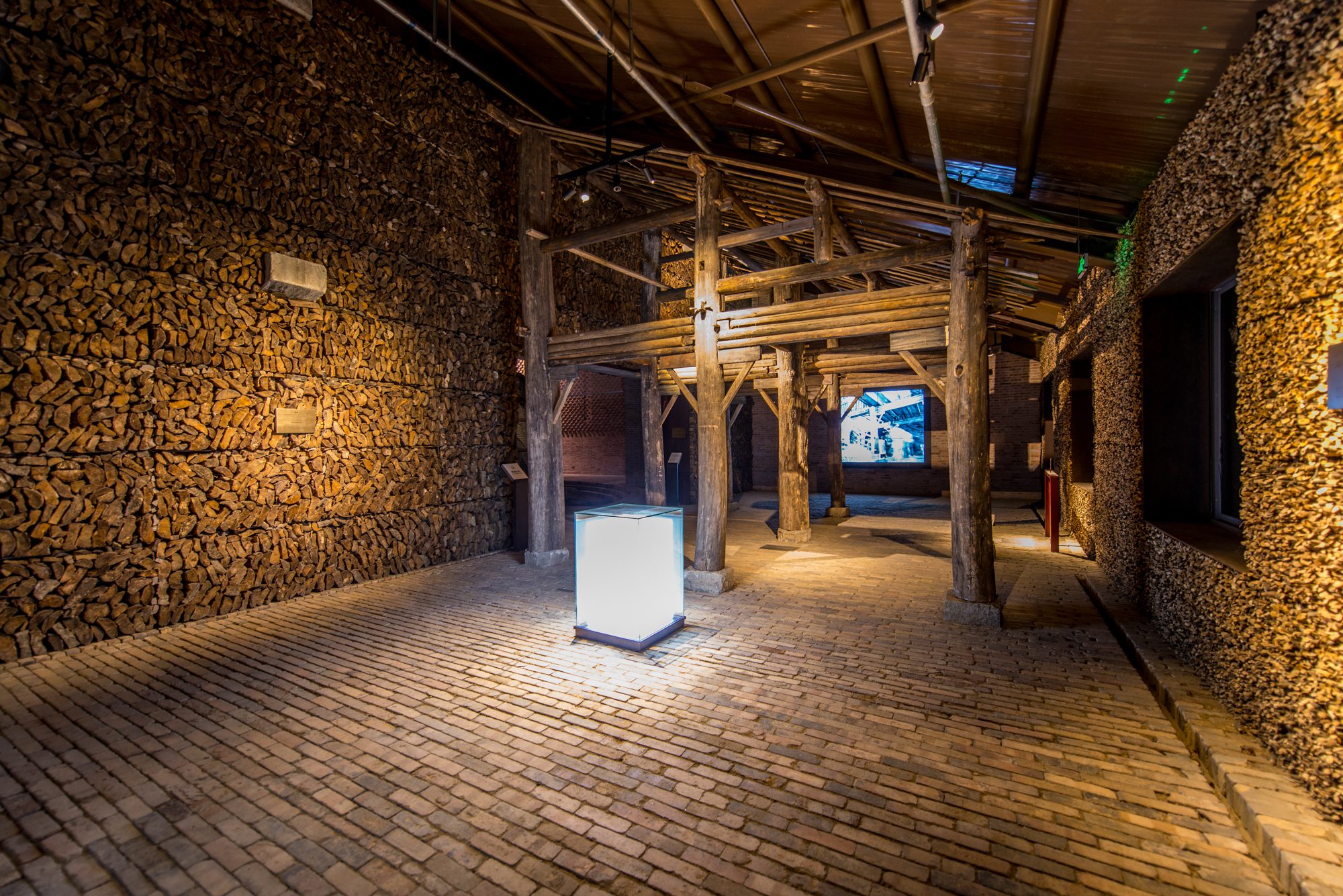
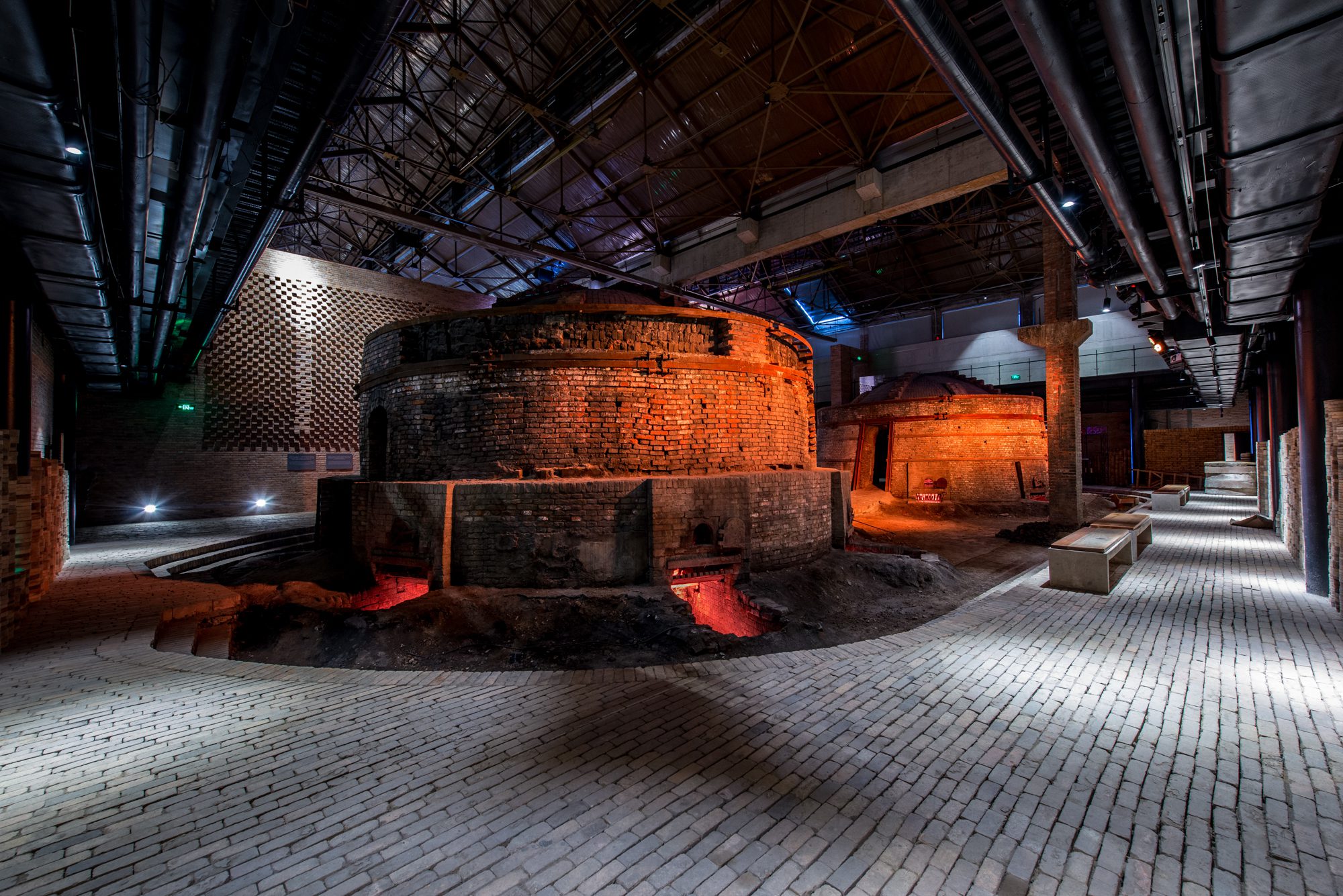
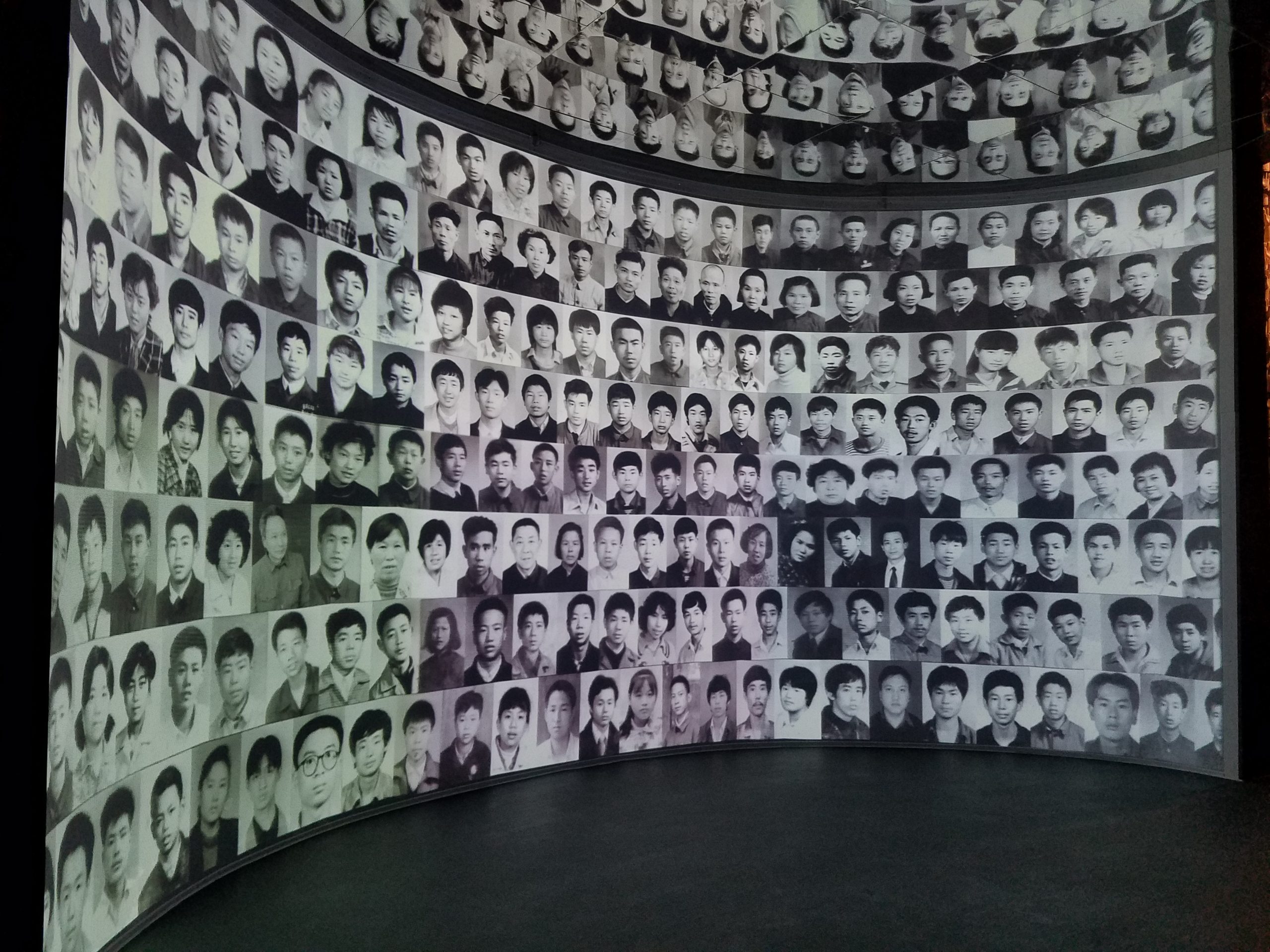
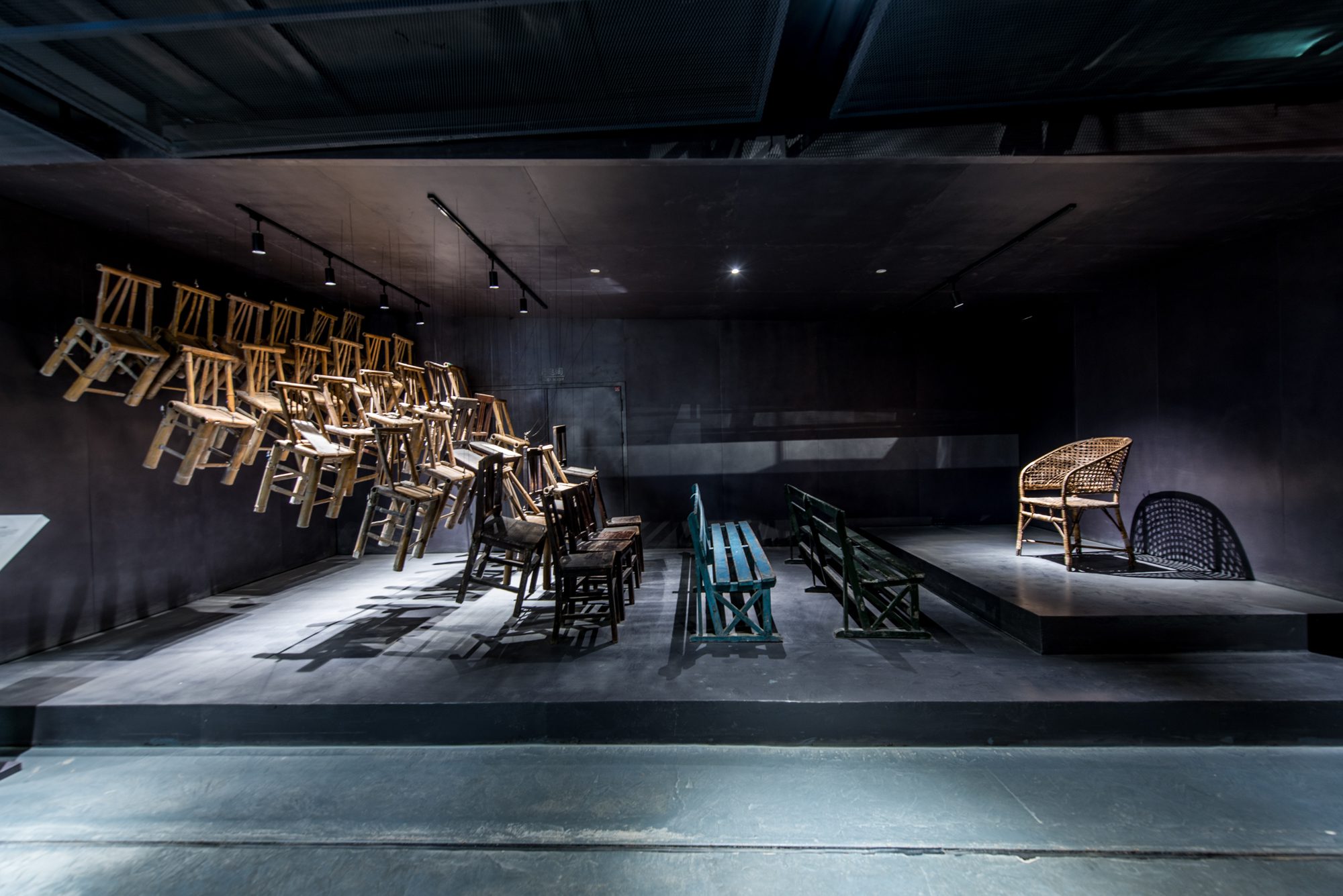
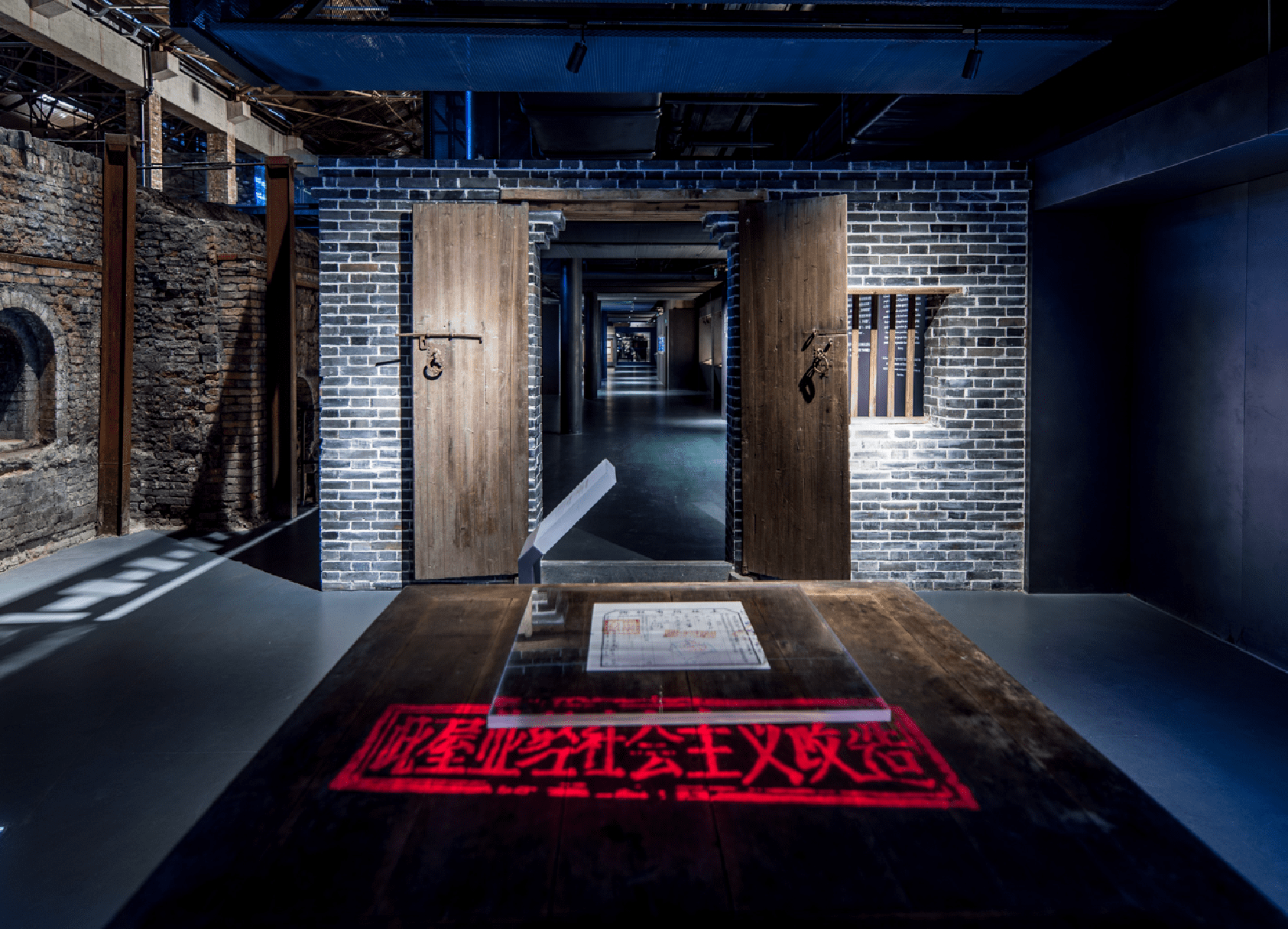
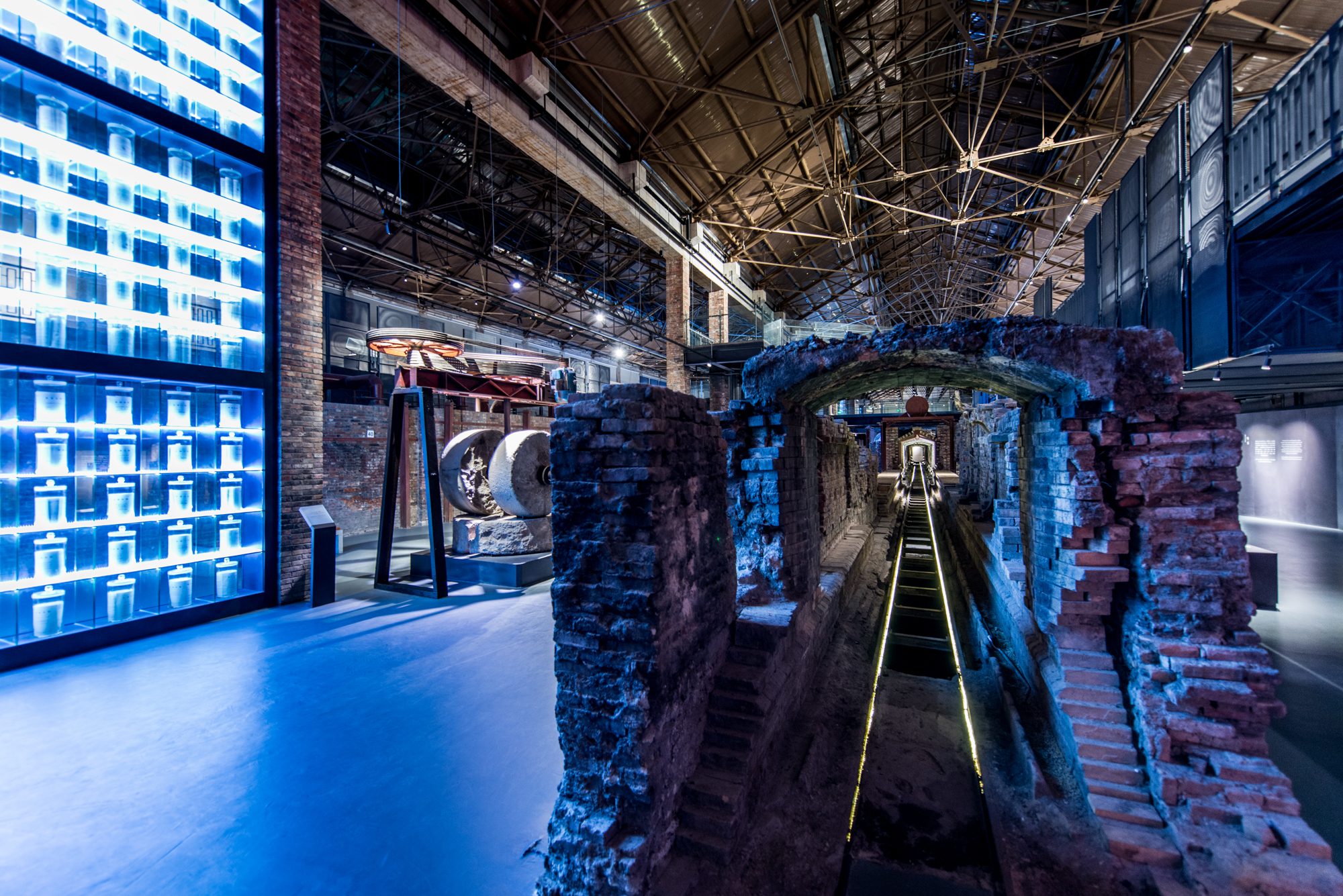
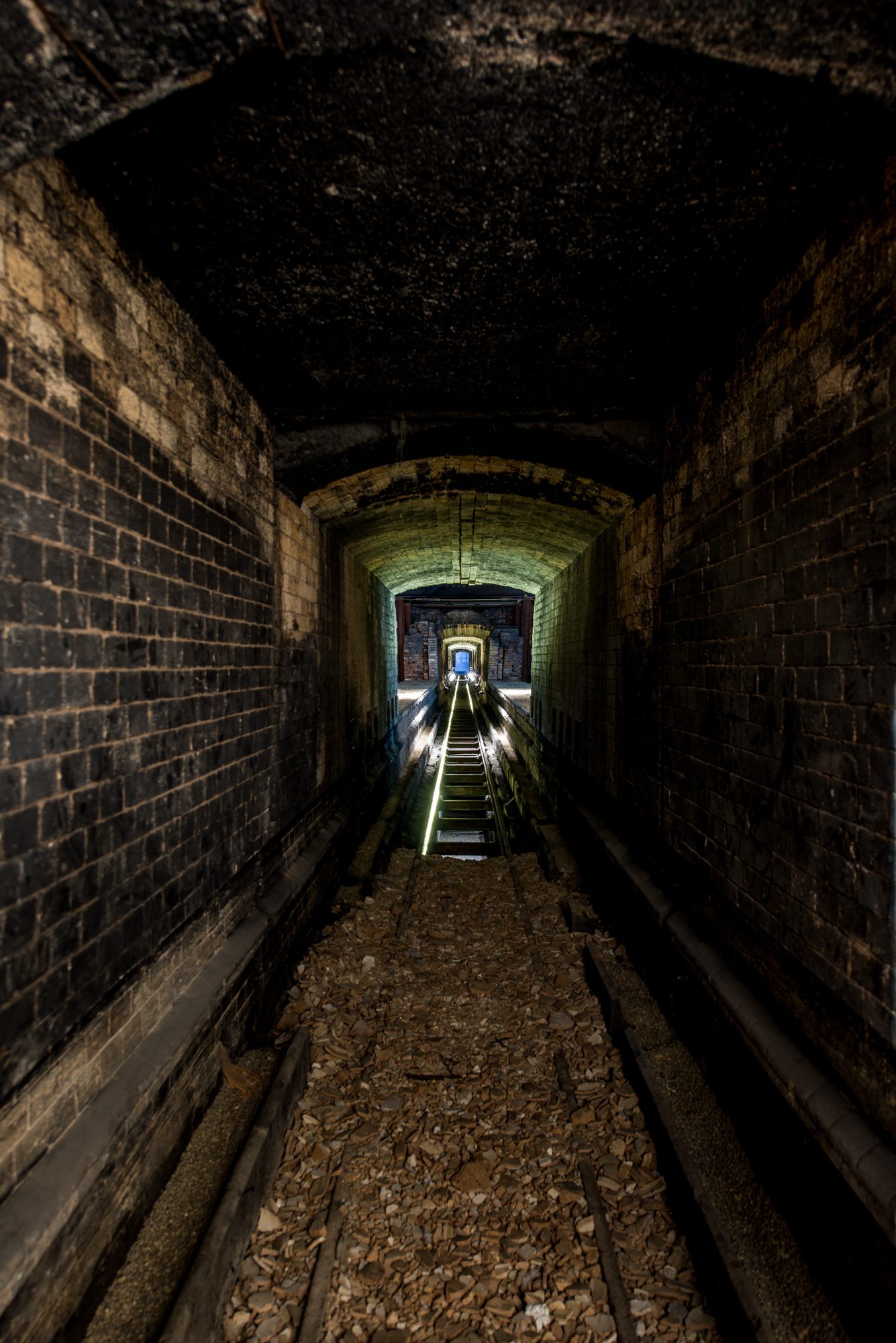

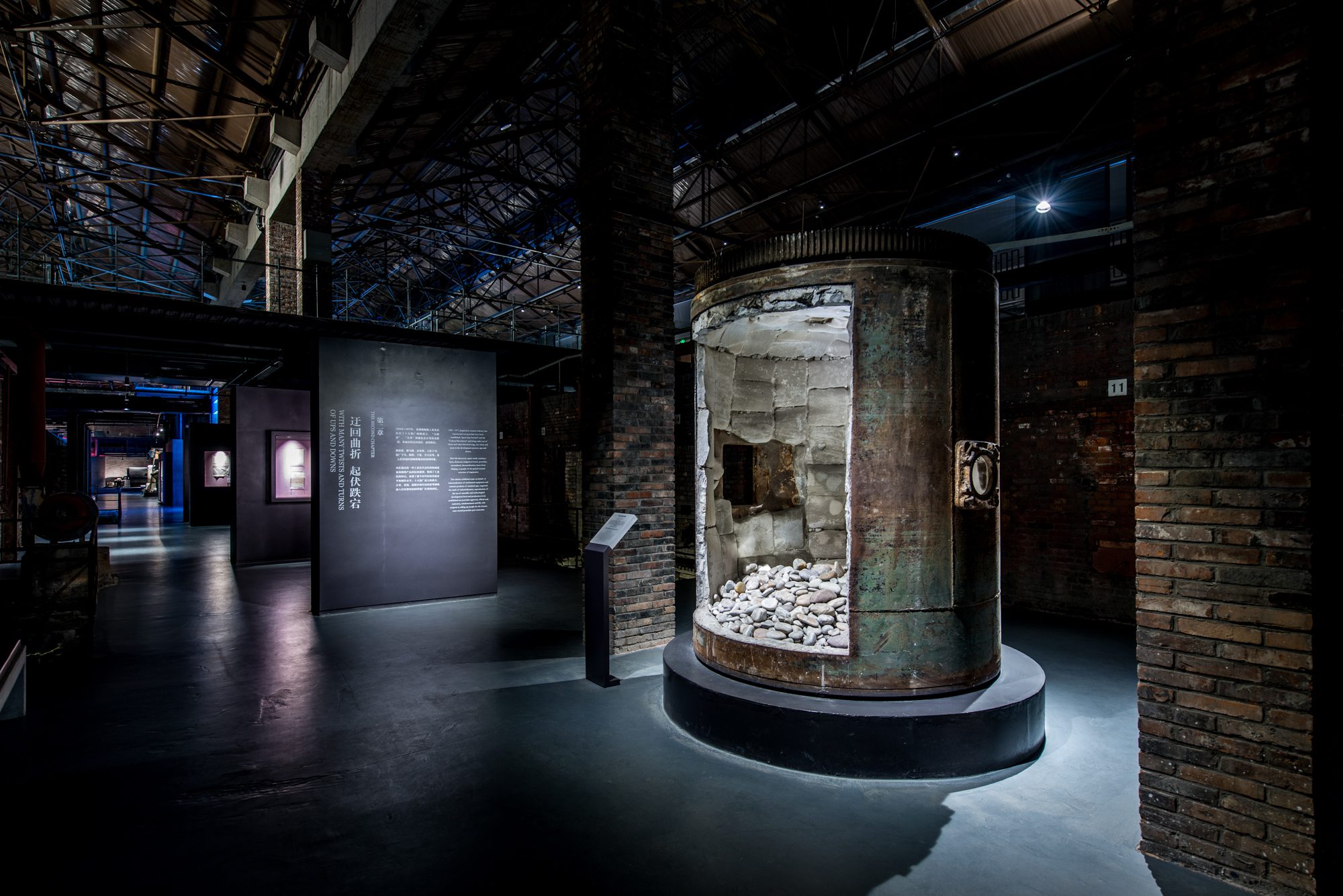

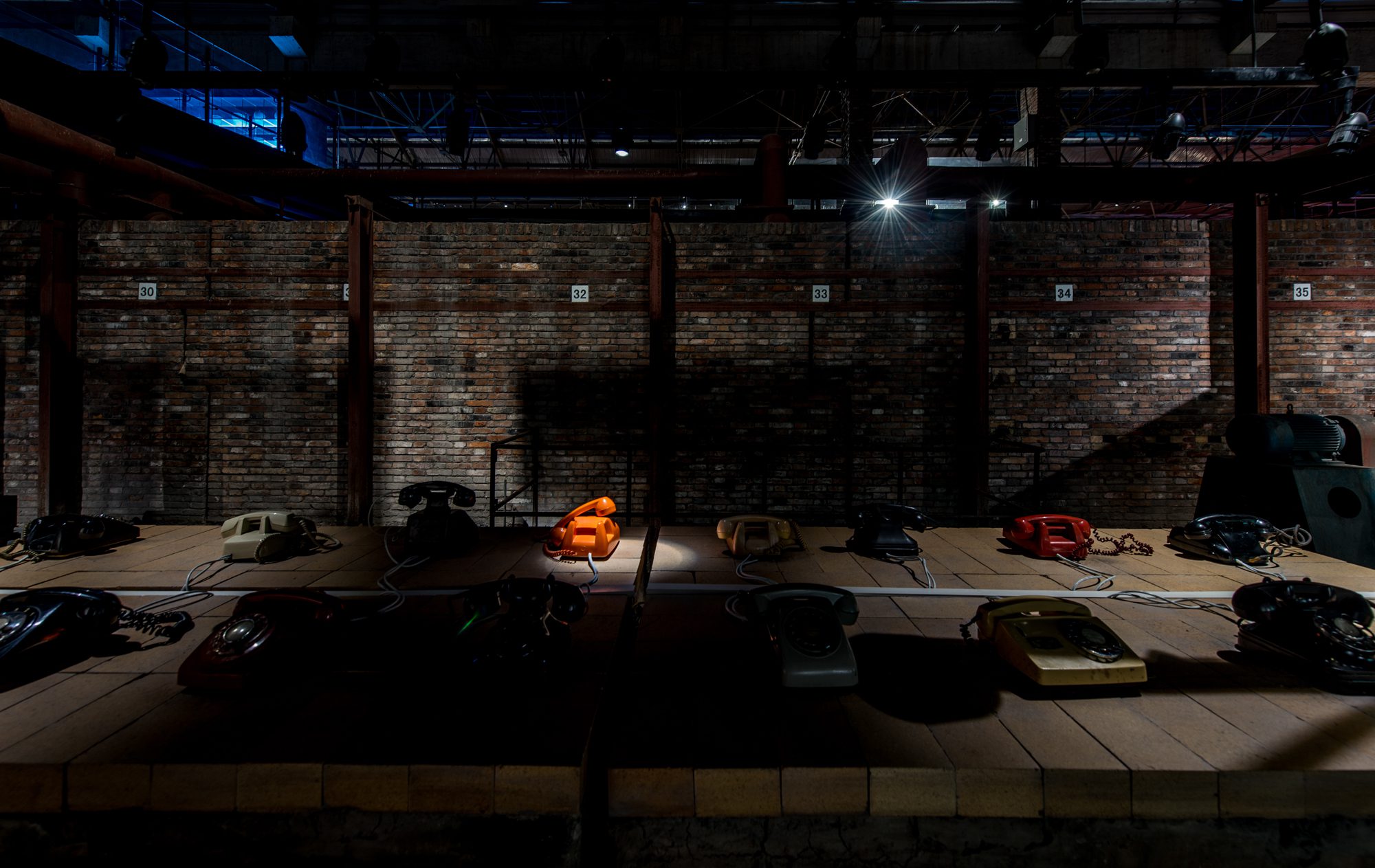
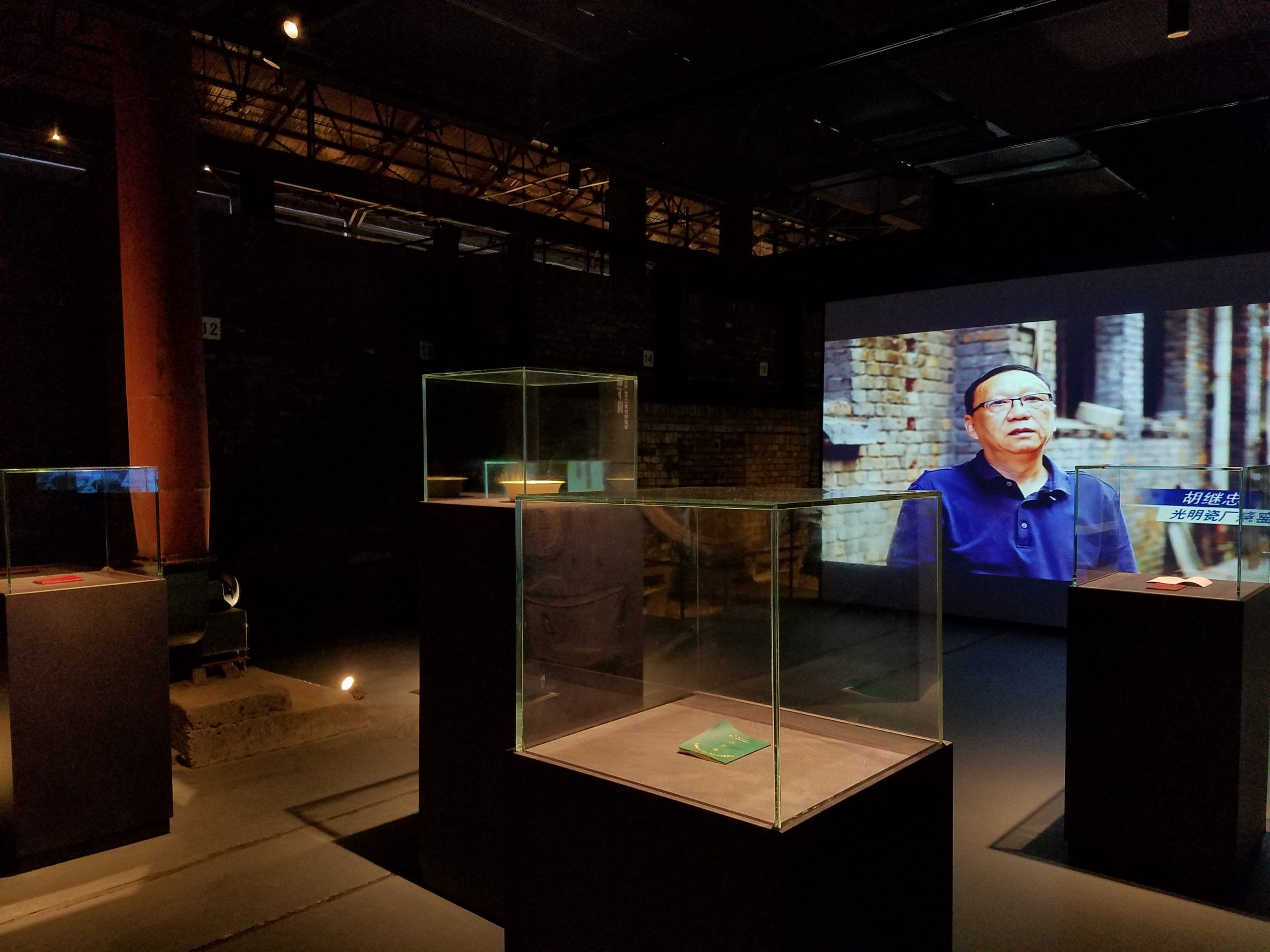
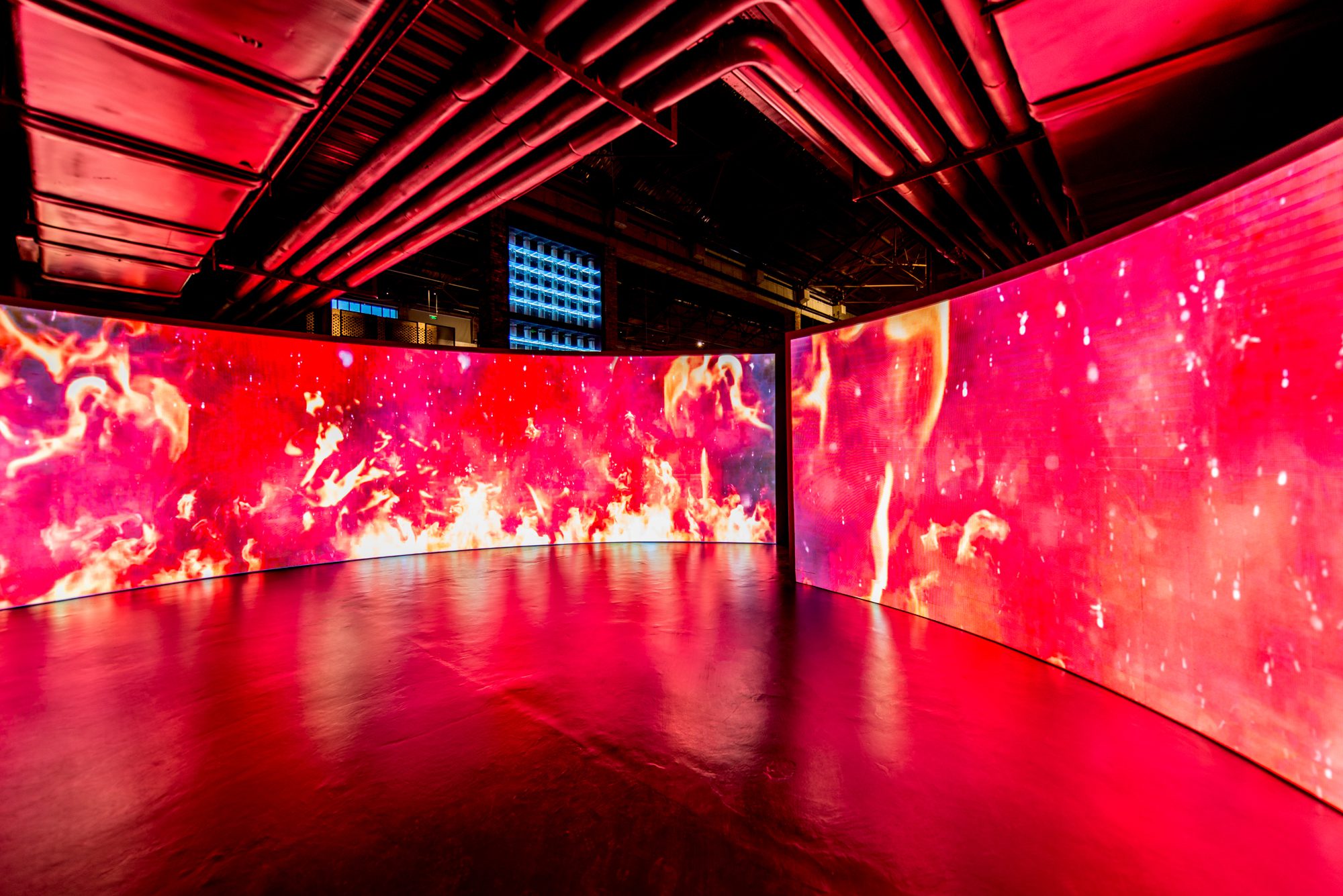
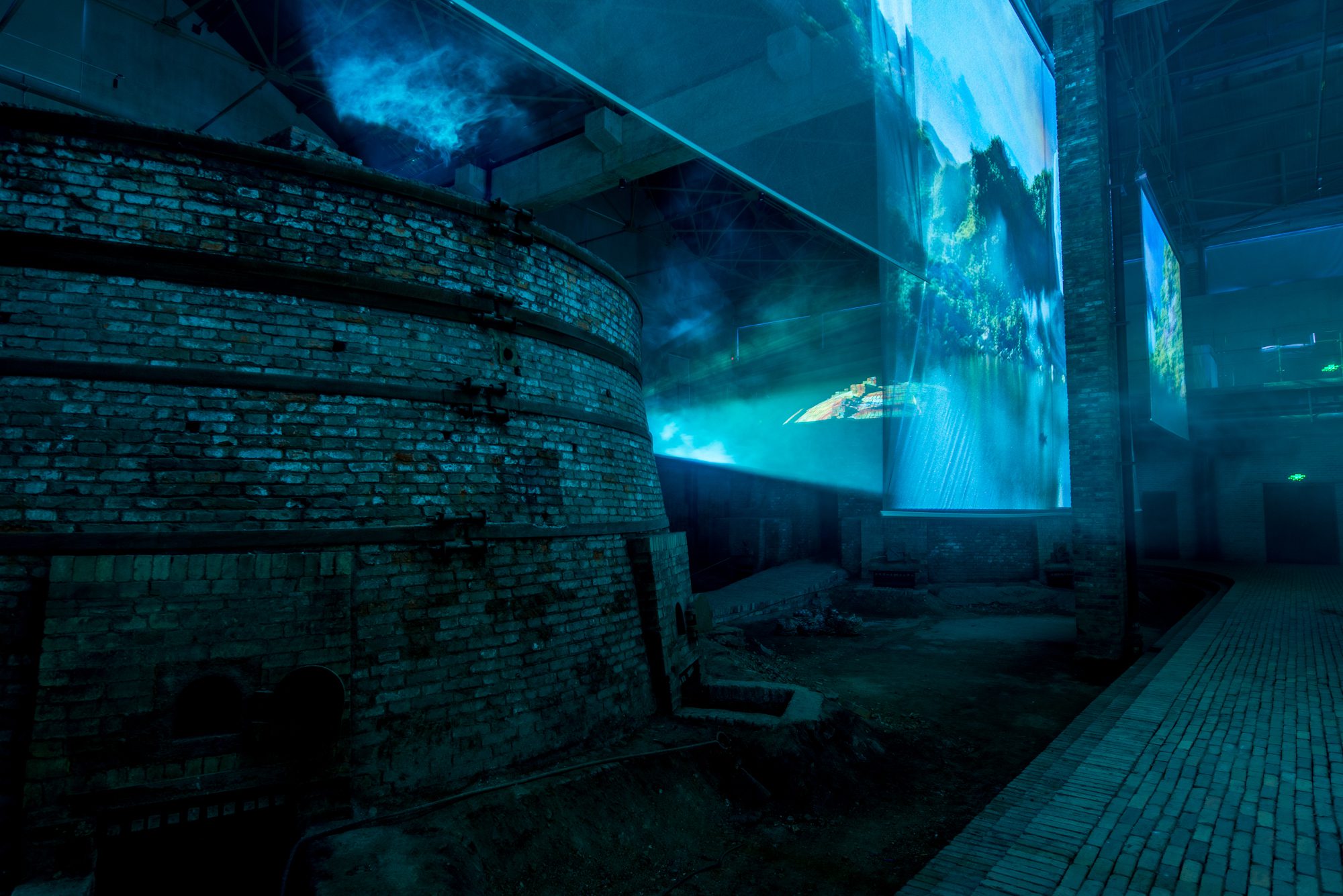
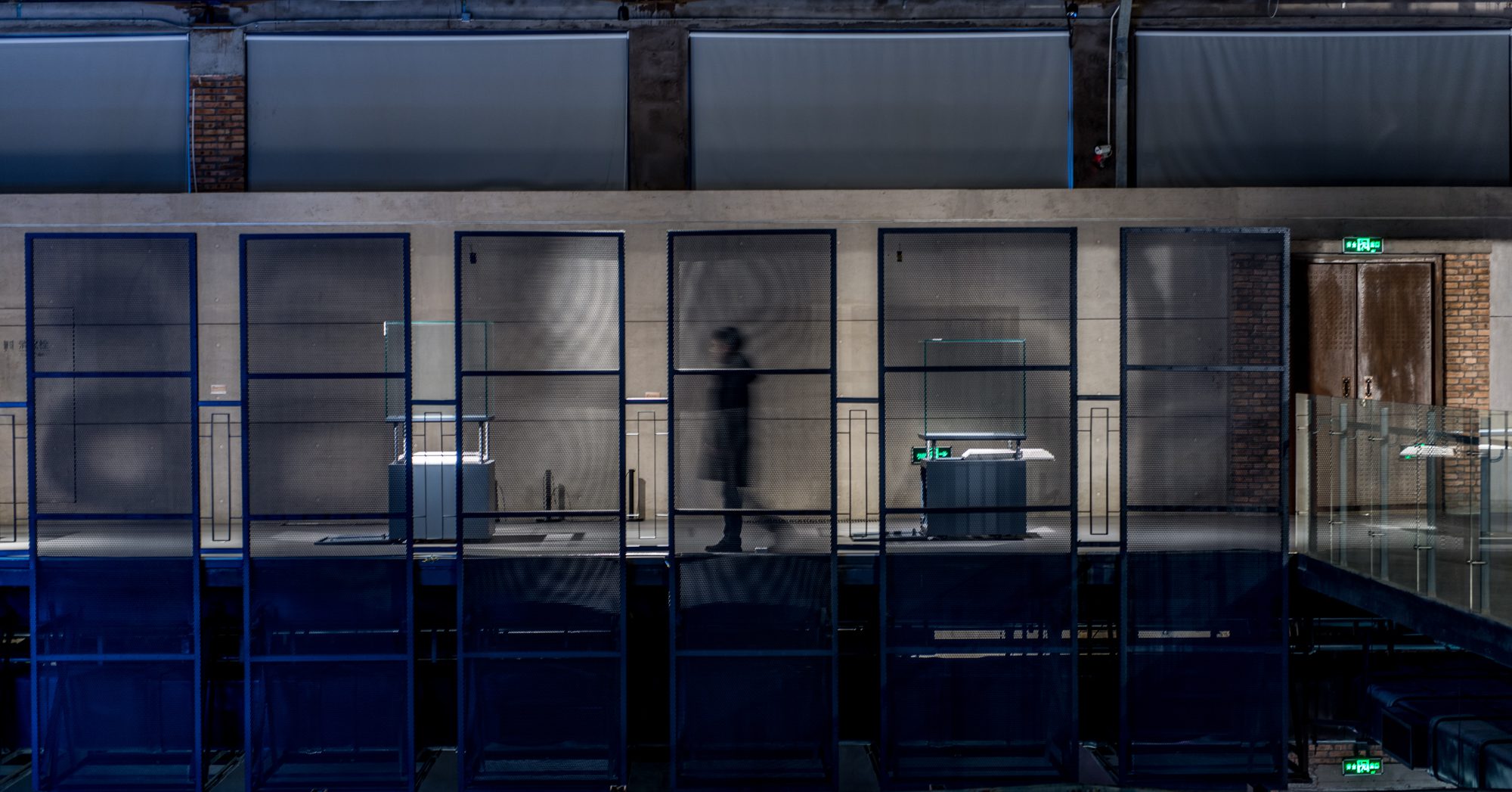
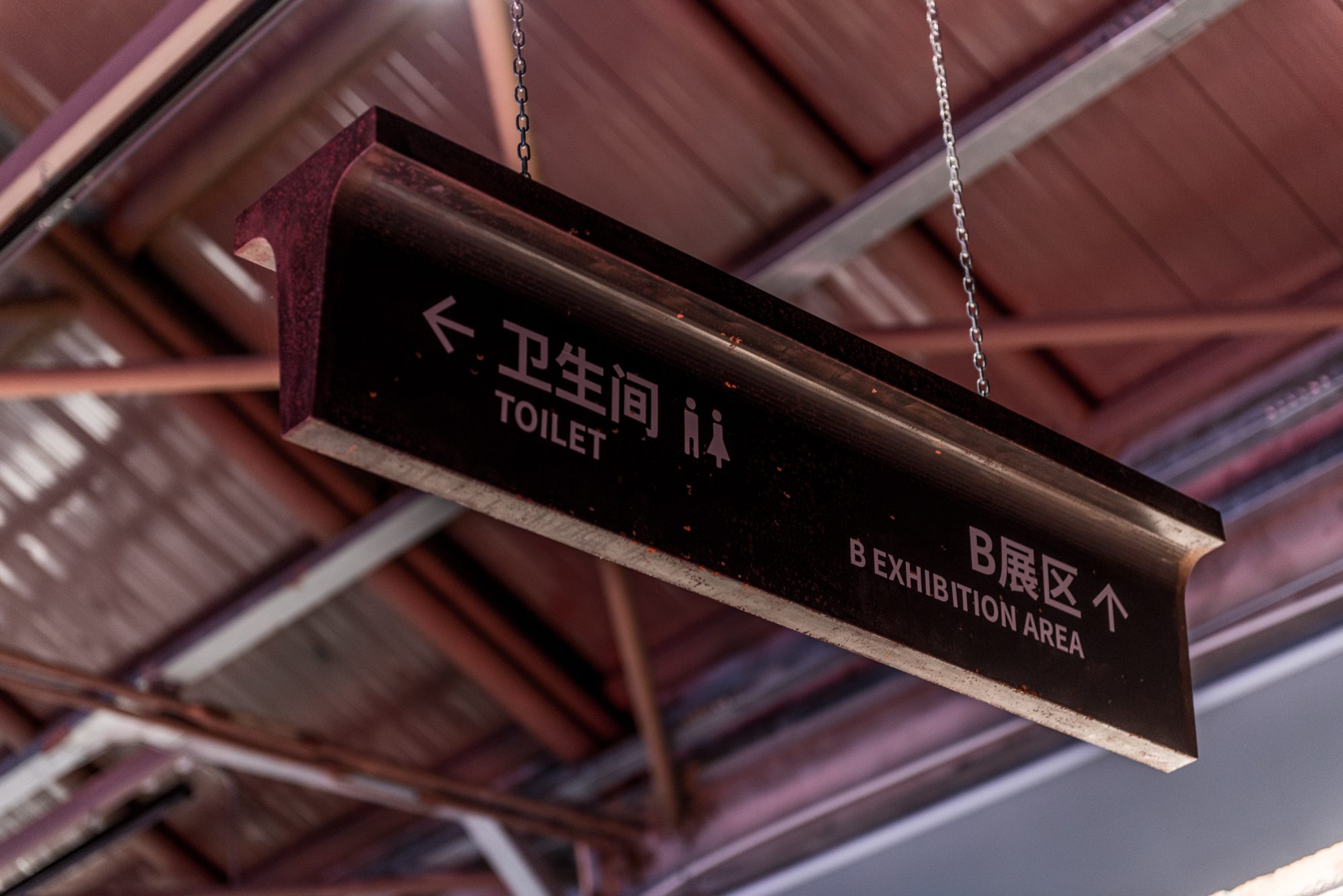

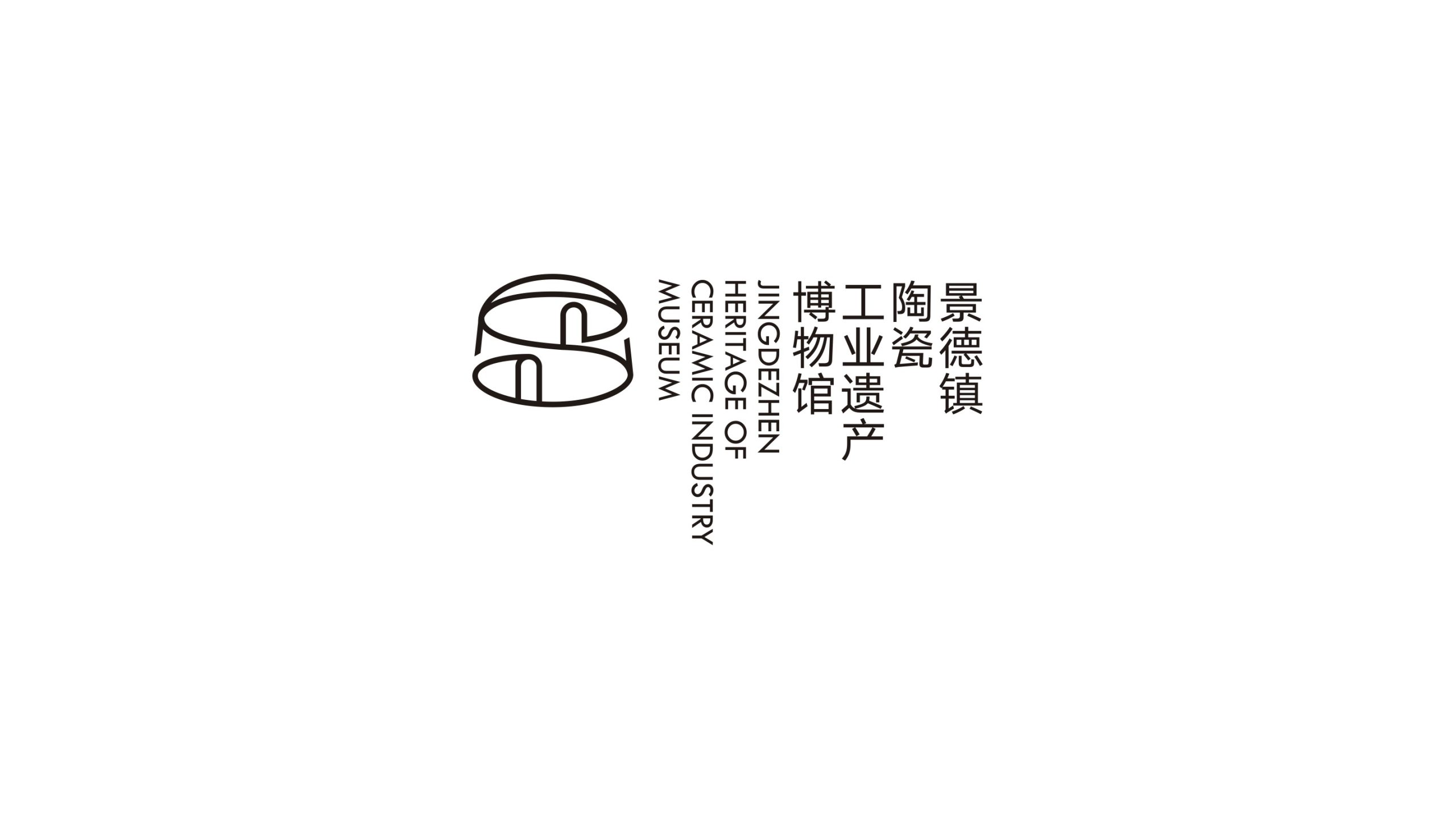


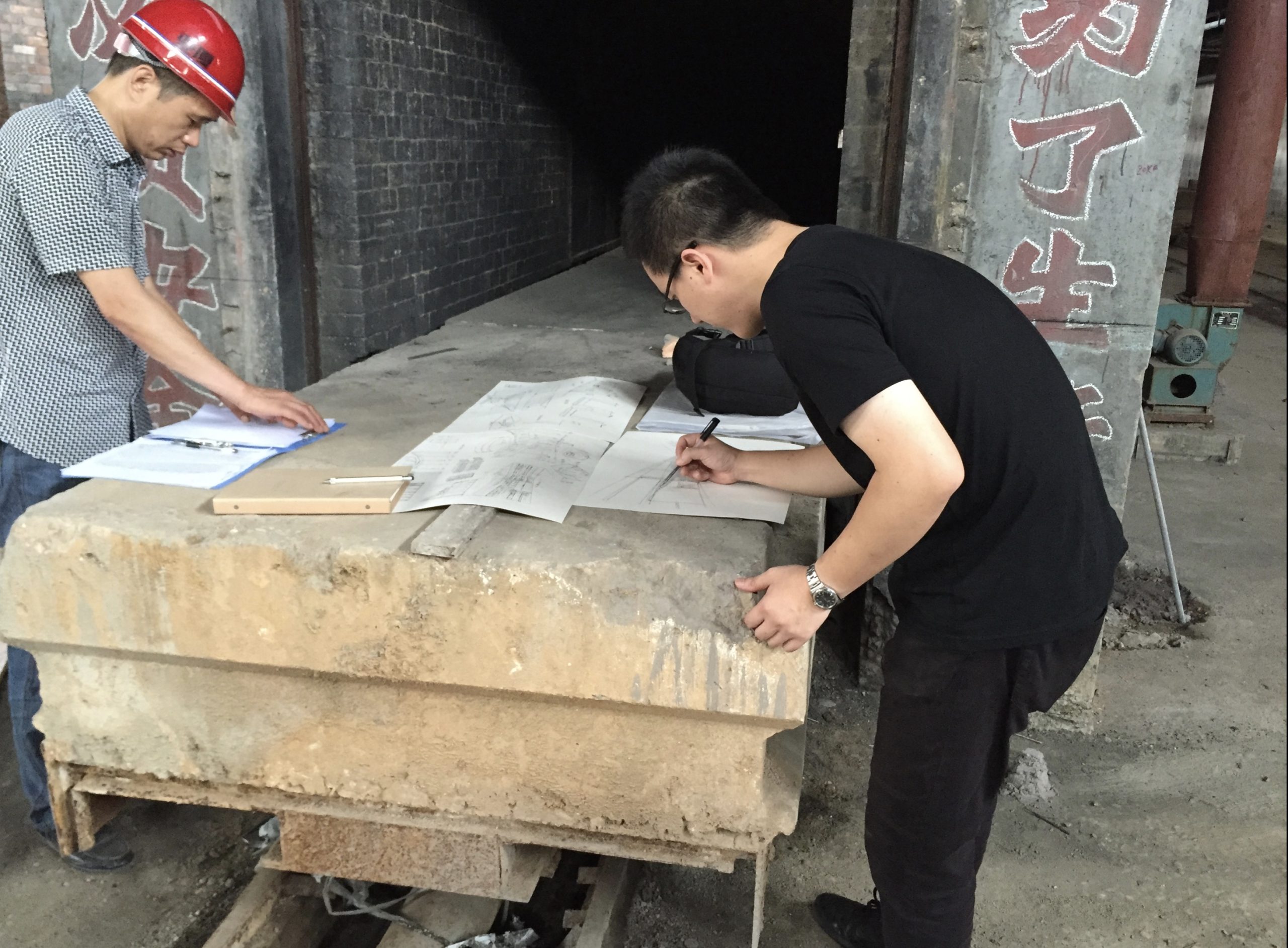
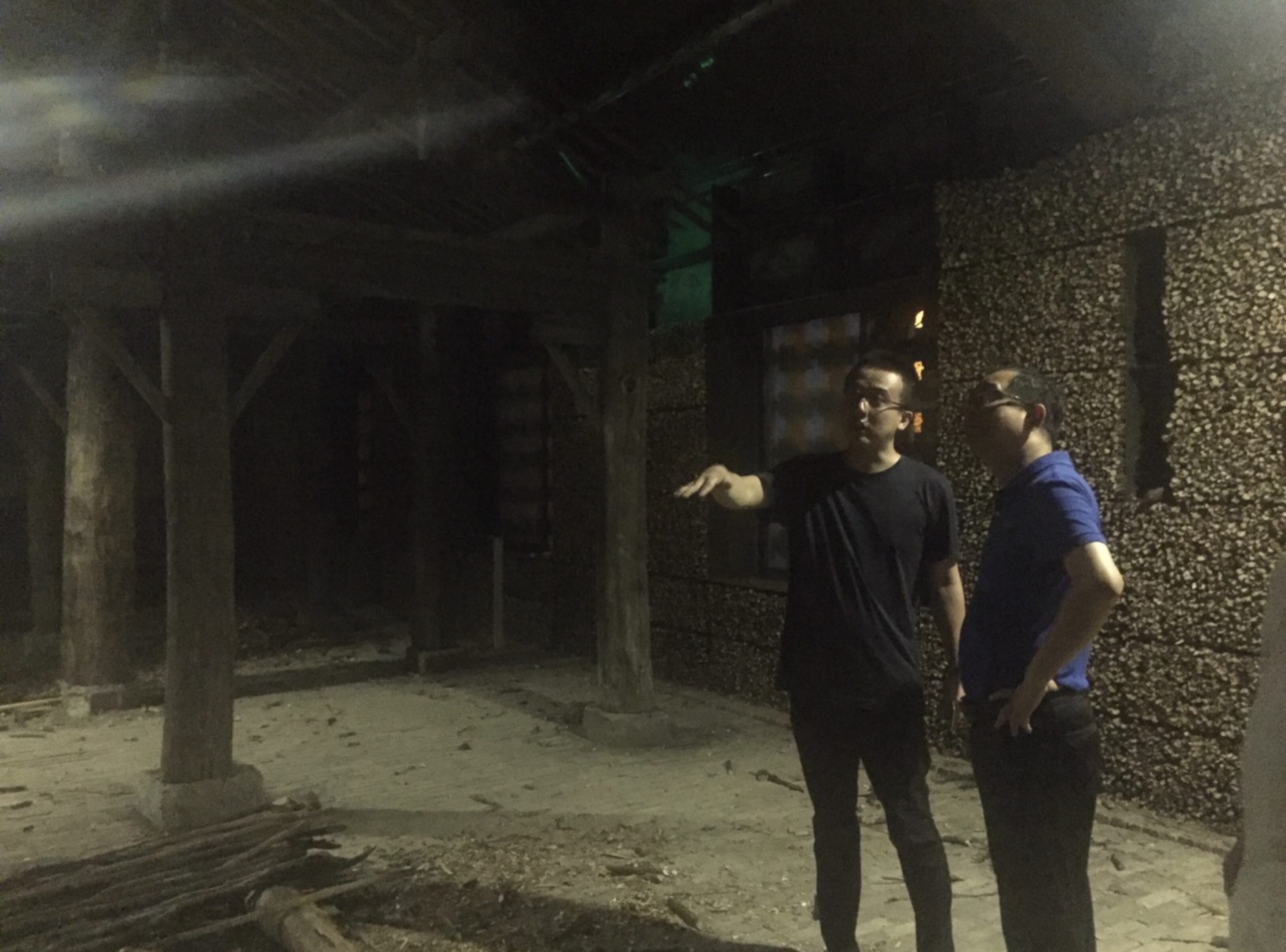

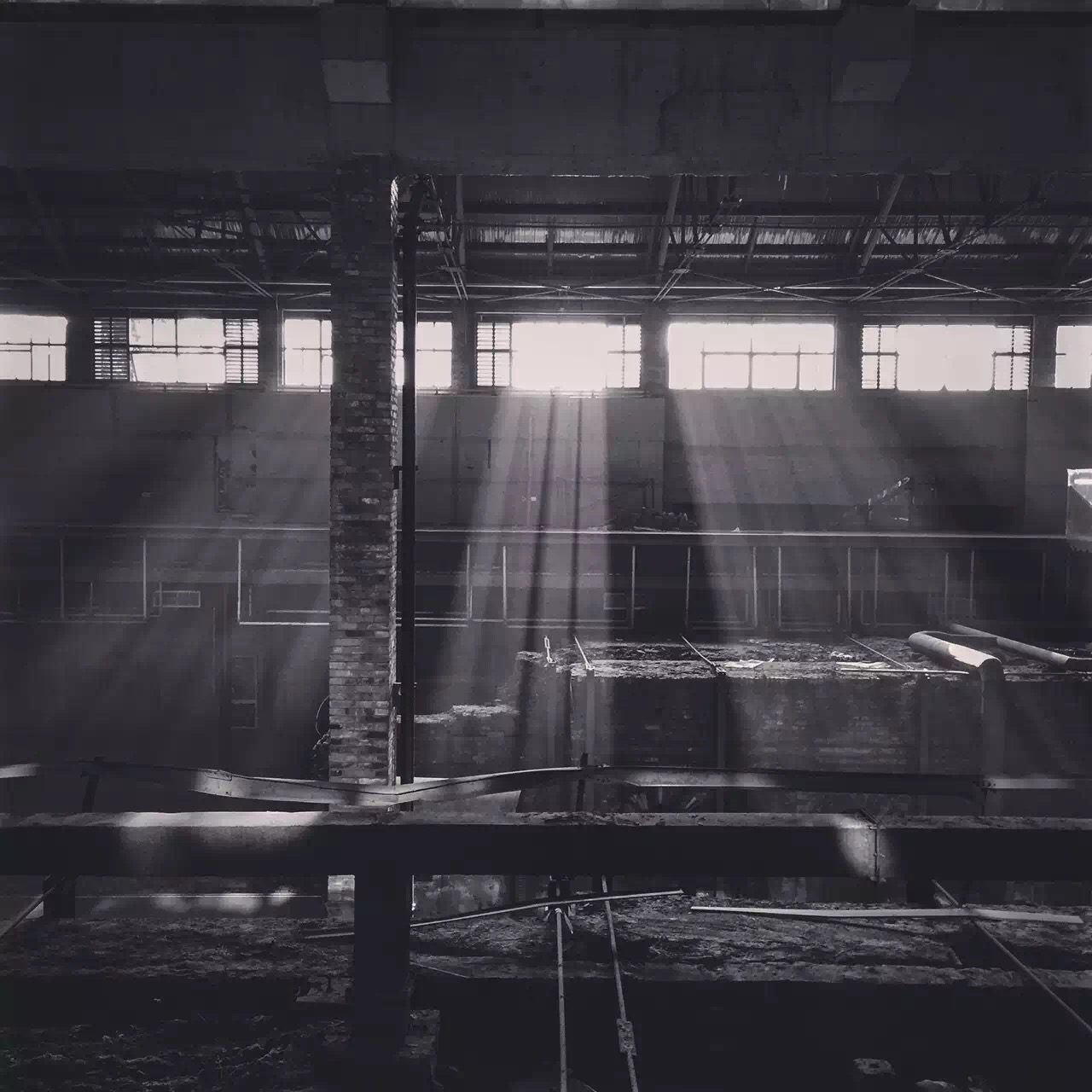


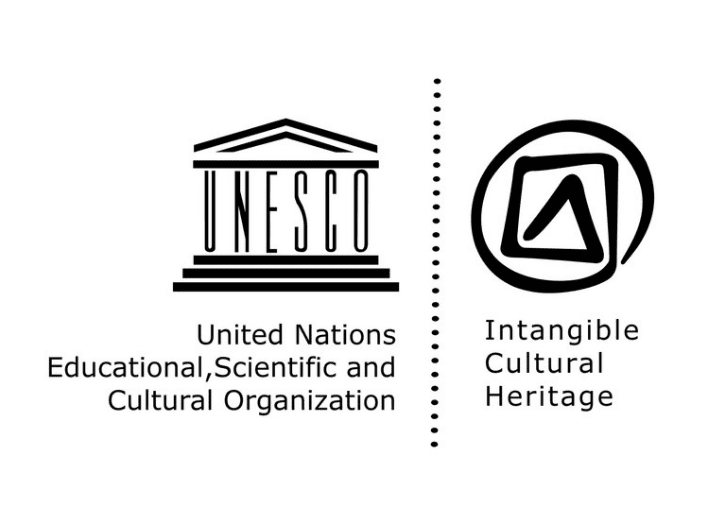

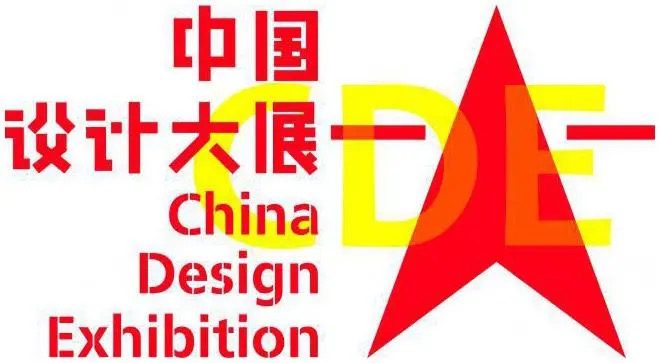

景德镇陶瓷工业遗产博物馆
展览策展 / 空间设计 / 展示设计 / 视觉形象设计 / 导视设计
2016
2024年度iF设计奖
2023年度红点设计奖
第22届中国室内设计大奖赛 铜奖
金堂奖· 2018年度优秀公共空间设计
入选大潮涌进——浙江省第十四届美术作品展览
联合国教科文组织2017年度亚太地区文化遗产保护奖
入选第二届中国设计大展
“景德镇陶瓷工业遗产博物馆”将20世纪50年代的宇宙瓷厂厂房改造为博物馆及综合设施,展现了景德镇作为享誉世界之陶瓷制作中心的卓越地位,并将厂房转化为公共空间。基于遗产保护的最少干预原则,改造选择的改进型现代工业美感呼应了20世纪中叶旧厂房工业建筑的形态和气息,制造出柔和的背景,而将各时期的窑炉遗存置于舞台中心。当代材料的色调组合反衬原先的砖结构,创造出戏剧性的观赏效果。新的设计不仅尊重原先工厂的形式和比例,也创造了与著名陶瓷生产设备的全新对话方式。
——联合国教科文组织2017年度亚太地区文化遗产保护奖获奖评语
The transformation of the 1950s Cosmic Porcelain Factory into a museum and mixed-use facility showcases Jingdezhen’s fame as aworld-renowned ceramic production centre and opens up the former factory space for broad public use. Based on the principle of minimal intervention, the choice of a streamlined modern industrial aesthetic respondsto the mid-twentieth century industrial architecture of the historic factory building providing a muted backdrop that allows the kiln remains to takethe spotlight. The contemporary materials palette creates a dramatic counterpoint to the original brick structures. The new design respects the form and scale of the former factory and creates innovative opportunities to interact with the famous ceramic production facilities.
Award for New Design in Heritage Contexts
UNESCO Asia-Pacific Awards for Cultural Heritage Conservation
景德镇陶瓷工业遗产博物馆项目从一开始立项,就坚定了以“人性”为主线,以“个体故事”为剧情框架的设计理念。
——项目主创设计师俞佳迪
From the very beginning, Jingdezhen Industrial Heritage Museum project has firmly adhered to the design concept of ‘humanity’ as the main line and ‘individual story’ as the plot frame.
Yu Jiadi, Chief Designer of the project
百年陶工 家国记忆
Centrury Dream of Ceramic Industry
2014年暮春至2017年深秋,宇志文创团队历时四年,通过对历史文献的打捞,以珍贵实物、图文影像资料等,对现代陶瓷工业的工具、设备、窑炉、工艺流程、产品,391名陶瓷工人口述史,以及6.9万名瓷工“身份档案”进行集中展示。所有这些,在“陶工印迹:景德镇百年陶瓷工业遗产展”中熔铸成“自我叙事”的纪念物与情感体,在空间叙事中以手工作坊—私营—私私联营—公私联营—国营瓷厂—改制转型的历史脉络,展现了1909年至2010年景德镇陶瓷工业经历的沧桑变革和曾经焕发的光华。设计团队和业主团队以真情诚意最大化地保留了这份遗产记忆最纯正的新鲜度,使人置身其中不仅能够品味景德镇近现代工业发展历史,也能纵览中国陶瓷工业遗产风貌。该展览也成为“景德镇陶瓷工业遗产博物馆展示与视觉形象一体化设计”项目的核心版块。
From the spring of 2014 to the autumn of 2017, the YuDesign Office spent four years in the design of salvaging historical documents, using precious physical objects, graphic image materials, etc., describing the history of tools, equipment, kilns, process processes and products of the modern ceramic industry, the population of 391 ceramic workers, and 69,000 the porcelain worker’s identity file is displayed centrally. All of these are melted into ‘self-narration’ souvenirs and emotions in the exhibition of ‘Potters Imprint: Jingdezhen Ceramics Industry Heritage Exhibition for a Century’. The spatial narrative is the historical context of the transformation, showing the vicissitudes and changes experienced by Jingdezhen’s ceramic industry from 1909 to 2010. The design team and the owner team have kept the purest freshness of this heritage memory with sincerity. Let people experience the modern industrial development history of Jingdezhen, and have an overview of the heritage of the ceramic industry, as well as the vicissitudes and brilliance of Jingdezhen’s ceramic industry. The exhibition has also become the core section of the project ‘Exhibition and Visual Image Integration Design of Jingdezhen Industrial Heritage Museum’.
人性第一 · 瓷工记忆
Reconstruct the Memory of Ceramic Workers Based on Human Nature
作为陶溪川文创街区的精神灯塔,强调“人”的主体性,展陈设计中尽可能去陶瓷化、弱化陶瓷主体,同时强化陶瓷周边产业与人和社会的真实关系。以一名景德镇瓷工从学徒到工人最后成为工艺美术大师的经历为线索,牵引出观众对人、行业、国家产业的各种理解与共鸣。
As the spiritual lighthouse of Taoxichuan Cultural and Creative Block, it emphasizes the subjectivity of ‘humanity’. In the exhibition design, it decerifies and weakens the main body of ceramics as much as possible, and at the same time strengthens the real relationship between ceramic peripheral industries and people and society. Taking the experience of a Jingdezhen porcelain worker from an apprentice to a worker and finally becoming a master of arts and crafts as a clue, it draws the audience’s understanding and resonance with people, industries and national industries.
媒介融合 · 排演历史
Fusion Media Express History
全馆装置艺术展品共计12处,展陈设计中充分实现“让展品讲述自己的故事”;煤窑遗址的灯光设计做到营造仪式感的同时,达到对遗址零破坏的工艺要求;场馆中的环境音乐会引发观众产生强烈的情境代入感,设计师鉴于展馆空间优势,利用方位声场选择音乐营造声场同步的氛围效果。
There are a total of 12 art exhibits installed in the museum. ‘Let the exhibits tell their own stories’ are fully realized in the exhibition design; the lighting design of the coal kiln site creates a sense of ceremony while meeting the process requirements for zero damage to the site; the environmental concert in the venue has caused a strong sense of situation substitution for the audience. In view of the exhibition, the designer The space advantage of the hall is to use the orientation sound field to choose music to create an atmosphere effect of sound field synchronization.
景德镇陶瓷工业遗产博物馆设计初衷是“瓷厂工人的百年记忆”,设计团队通过沉浸式、装置化的展陈设计重塑这种记忆,它们像一串钥匙,开启了每位观众心中的各类往昔之门,同步了观众曾经经历过或间接感受过的“劳动者记忆”。
The original intention of the Jingdezhen Industrial Heritage Museum is to ‘hundred-year memory of porcelain factory workers’. The design team reshapes this memory through immersive and installation design. They are like a bunch of keys, opening all kinds of doors of the past in the hearts of each audience, synchronizing the ‘working memory’ that the audience has experienced or indirectly felt.
这种感知频道的开启,为观众们带来千万种自主解读。他们在此驻足怀想,想自己、想亲人、想过去,在逝去的芳华中追寻人生的感动与温情。
The opening of this perception channel brings tens of millions of independent interpretations to the audience. They stopped here and thought about themselves, loved ones, the past, and pursued the touch and warmth of life in the lost fragrance.
在展览开幕现场,到场的工友们无不骄傲地感慨道:我曾经在这里工作过、努力过、奋斗过,谢谢你们还记得。有一位景德镇观众竟然在“十大瓷厂”六万陶瓷工人的影像矩阵中找到了自己过世父亲的年轻照片,看到后眼泪止不住地流。
At the opening of the exhibition, the workers present proudly sighed: I have worked, worked hard and struggled here. Thank you for remembering it. An audience in Jingdezhen actually found a young photo of his deceased father in the image matrix of 60,000 ceramic workers in the ‘Top Ten Porcelain Factory’. After seeing it, tears couldn’t help flowing.
现实剧场 · 历史即复活
Theatre of Reality · The Resurrection of History
展场中,设计师经常以演员的身份思考属于展品的角色和剧情,同时注重展馆遗址的“原质保留”,及展品陈列的“原味提纯”,综合运用多种影像媒介并融合艺术装置重构历史情境,让展品冲破个体叙事的框架在一个时代的集体意志中彼此拥抱、缝合、弥散,重塑景德镇现代陶瓷工业遗产的物质与精神空间,以实物、口述史实证及影像投射出我国近现代手工艺到手工业的发展与回归之路,带领观众们真实、客观、全面地体验这段历史的沉浮变迁。
In the exhibition hall, designers often think about the characters and plots belonging to the exhibits as actors. At the same time, they pay attention to the ‘original preservation’ of the ruins of the exhibition hall and the ‘original purification’ of the exhibits. They comprehensively use a variety of video media and integrate art installations to reconstruct the historical situation, so that the exhibits can break through the framework of individual narratives in an era. Embrace, suture and disperse each other, reshape the material and spiritual space of Jingdezhen’s modern ceramic industry heritage, project the development and return of China’s modern handicrafts handicrafts with physical objects, oral historical evidence and images, leading the audience to truly, objectively and comprehensively experience this historical ups and downs and changes.
场景还原:打扫干净就好
Scene Reconstruction: Just Clean it Up
隧道煤窑是陶瓷烧窑史上的一次巨大革命。它就像一个自动流水线,陶瓷坯胎在这个门进去,随着自动传输装置,走到末尾门的时候,整个烧制正好完成。这种设计既降低了成本、提高了产能,也解放了劳动力,是景德镇陶瓷工业遗产博物馆的镇馆之宝。面对馆内的窑体,主创设计师俞佳迪与陶文旅集团的管理层一致强调“打扫干净就好”的理念,并利求用照明设计来烘托窑体原汁原味的美感。
Tunnel coal kiln is a great revolution in the history of ceramic kilns. It is like an automatic assembly line. Ceramic billet tires enter this door. With the automatic transmission device, when it comes to the end door, the whole firing is just finished. This design not only reduces costs, improves production capacity, but also liberates the labor force. It is the treasure of Jingdezhen Industrial Heritage Museum. Facing the kiln body in the museum, the main designer Yu Jiadi unanimously emphasized the concept of ‘clean up’ and sought to use lighting design to set off the original beauty of the kiln body.
“原味提纯”的手法,也体现在本项目展示的工资档案、工艺标准文本等文献展品中。如在工资档案的展陈中,设计师运用信息设计的方法论将工资单中的几处细节性信息进行局部放大,以重现当年会计出纳的认真程度;在展示“瓷器产品底款的演进”这一环节,设计师继续使用该种方法对产品底款的演变过程进行析出和提炼,从而让观众在纷繁的展品群落中“秒懂”历史。
The method of ‘original purification’ is also reflected in the salary files, process standard texts and other document exhibits displayed in this project. For example, in the exhibition of the payroll file, the designer used the methodology of information design to partially enlarge several detailed information in the payroll to reproduce the seriousness of the accounting cashier in that year. In the process of displaying the “evolution of the underlying model of porcelain products”, the designer continued to use this method to advance the evolution of the product base. Analysis and refinement, so that the audience can understand history in the complex exhibits community.
馆内展出的实物和影像中有很多都来自瓷厂老职工的踊跃捐助和对他们的口述采访,设计师作为收集这些物品的亲历者与口述史的转述者,在开展每一个情境装置的设计时,都希望可以有效传递展品历经的事件与情感。
Many of the physical objects and images on display in the museum are from enthusiastic donations and oral interviews with veteran employees of porcelain factories. As a personal experience of these items and a narrator of oral history, designers hope to effectively convey the events and emotions experienced by the exhibits when carrying out the design of each situational device.
不同于以视觉体验为主宰的博物馆展示策略,观众进入景德镇陶瓷工业遗产博物馆的场域,更多是被环绕其中的背景声场与互不相扰的各类声效所引领,由声音搭建的听觉空间同样作为叙事的载体,在这里,观众的情绪与展览场域内的音画节奏同频共振。
Unlike the museum display strategy dominated by visual experience, when the audience enters the field of Jingdezhen Industrial Heritage Museum, it is more led by the background sound field and various sound effects that do not disturb each other. The auditory space built by sound is also used as the carrier of narrative. Here, the audience’s emotions resonate with the audio and painting rhythm in the exhibition venue.
火,是所有陶瓷的出生仪式
Fire, the Birth Ceremony of All Ceramics
走完展陈动线,观众将迎来两面窑火的视觉墙壁,辅以松柴作装饰墙,其一方面代表某一种工艺消亡后的回望,另一方面也预示工匠的精神之火生生不息。
After walking the exhibition line, the first highlight felt by the audience was the visual wall of the kiln fire on both sides, which was supplemented by pine firewood as a decorative wall. On the one hand, it represents the look back after the death of a certain process, and on the other hand, it also heralds the endless fire of the craftsmanship spirit.
这个博物馆从设计至今已经过去八年了,陶文旅集团的主要参与团队和主创设计师俞佳迪回忆起当年的创作过程仍然充满怀恋。(上图:时任景德镇陶文旅集团董事长刘子力与本项目主创设计师俞佳迪;下图:柴窑展厅草图,俞佳迪绘。)
It has been eight years since the design of this museum. The main participating team and creators recalled that the creation process was still full of nostalgia. (Picture above: Liu Zili, then chairman of Jingdezhen Ceramic Cultural Tourism Group, and Yu Jiadi, chief designer of this project; Picture below: Sketch of Chai Kiln Exhibition Hall, drawed by Yu Jiadi.)
景德镇陶瓷工业遗产博物馆是陶溪川文创街区的精神灯塔。该项目的展陈设计中尽可能去陶瓷化,强调“人”的主体性,同时强化陶瓷周边产业与人和社会的真实关系。可贵的是,这个设计理念的初心自始至终都没有出现位移与动摇。
Jingdezhen Industrial Heritage Museum is the spiritual lighthouse of Taoxichuan Cultural and Creative District. The exhibition design of the project is decerized as much as possible, emphasizing the subjectivity of ‘humanity’, and strengthening the real relationship between the ceramic industry and people and society. Valuablely, the original intention of this design concept has not been displaced or shaken from beginning to end.
该博物馆现成为全国首家具有影响力和示范作用的陶瓷工业遗产(物质和非物质文化)专题博物馆,并于2017年12月入选“工信部第一批国家工业遗产名单”。
The museum has become the first influential and exemplary ceramic industrial heritage (material and intangible culture) thematic museum in China, and was selected into the ‘List of the First Batch of National Industrial Heritage by Ministry of Industry and Information Technology of China’ in December 2017.

 上一项:
上一项: